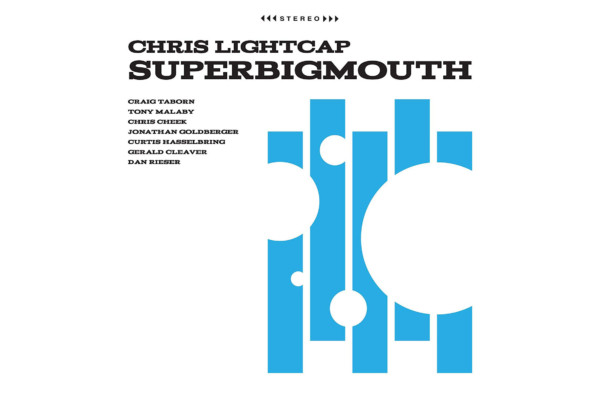Superette: An Interview with Chris Lightcap
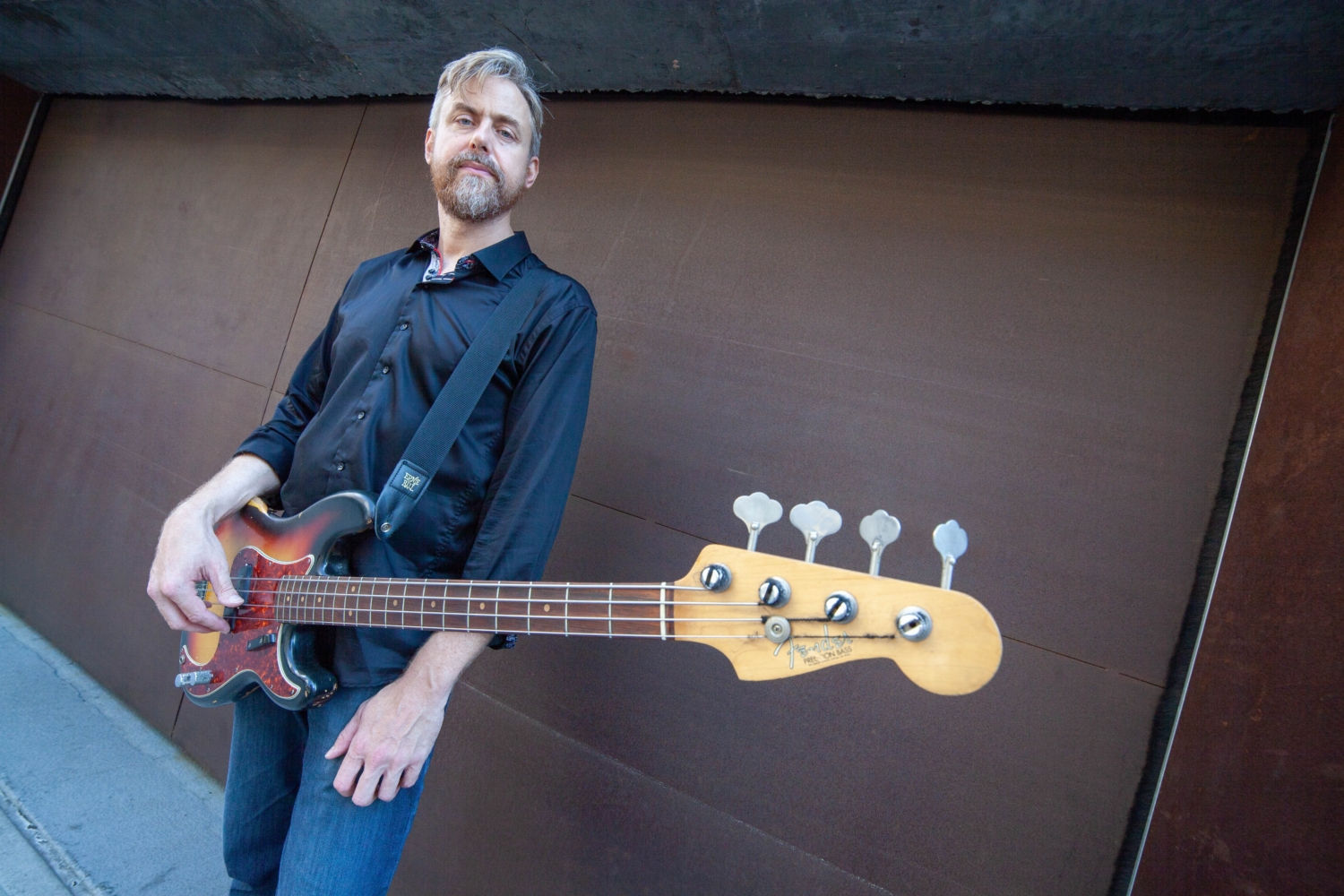
Chris Lightcap has an exquisite new album called Superette that takes his jazz-oriented music in a new direction. The album is named after his new all-electric ensemble featuring Jonathan Goldberger and Curtis Hasselbring on guitars and Dan Rieser on drums. An experiment in sounds, the group is described as exploring “the nexus of of harmolodics, surf, West African music, psychedelia and beyond.” For good measure, the bassist called on special guests Nels Cline and John Medeski to fill out the album.
Lightcap spends much of his time on the double bass and has worked with artists ranging from Regina Carter to Marc Ribot to Chris Potter and more. He dove head-first into the world of jazz after moving to New York City, but picking up electric bass gigs rekindled his love for his earlier classic rock influences.
When we caught up with Lightcap, he was just wrapping up a practice session. Superette will have a special CD release show at Le Poisson Rouge in New York City on September 15th that will include Cline and Medeski. We talked with the bassist to get the low down on his musical background, his Superette, and his love of gear.
What is a guy like you practicing?
I don’t practice the same way every day, but I usually start off by doing some improvising to see where I’m at physically and where the bass is physically. I love to just work on fundamentals with slow scales and long tones. I just go for consistency in tone, time, and intonation to be sure it’s something I can do. Then I’ll be as acclimated as I can for whatever gig I have later. After that I’ll work on music for any upcoming gigs or recordings I’m doing. That’s a luxurious practice day for me. It’s hard once you get into playing consistently. I noticed, especially when I first moved to New York, that it’s easy to get lulled into the idea that you don’t need to practice as much. I’ve always tried to force the issue and remind myself I need to keep doing it, even if I’m playing every night.
Do you make time to pick up the electric, too?
I do. I enjoy playing to songs I want to learn and checking out specific bass players. I’ve also been experimenting with different sounds and pedals, plus tweaking my setup which is something that I do a little too much. [laughs] I went through about ten years after moving to the city of playing little to no electric. In the years since then, I’ve steadily played more and more electric bass in addition to upright. One of the things I discovered when I got back into electric is all these different sounds and sonic approaches that I didn’t know about. I used to just want to be focused on upright in general. All the electric bass that was coming out back then in the early ’90s wasn’t interesting to me. The sound of the electric as I was hearing it was not something I connected to.
I used to do one gig a year on electric that was usually a wedding. In the meantime, I was playing jazz and all sorts of improvising on upright. Someone called me to do this steady gig that was a revue show playing hits of the ’60s and ’70s. I decided to do it so I got my Precision bass out. I thought, “I think I want to get flatwound strings.” This was around 2000, and I didn’t know anyone that was using them. The gig had us playing early British Invasion stuff all the way up to Donna Summer. So I got the strings and it was the most fun I had ever had playing electric bass since I was a kid. From that point on I got into doing more and more electric playing. I did research on bands and players and styles. It also got me back into all the music I liked before getting into jazz, like The Who and Led Zeppelin.
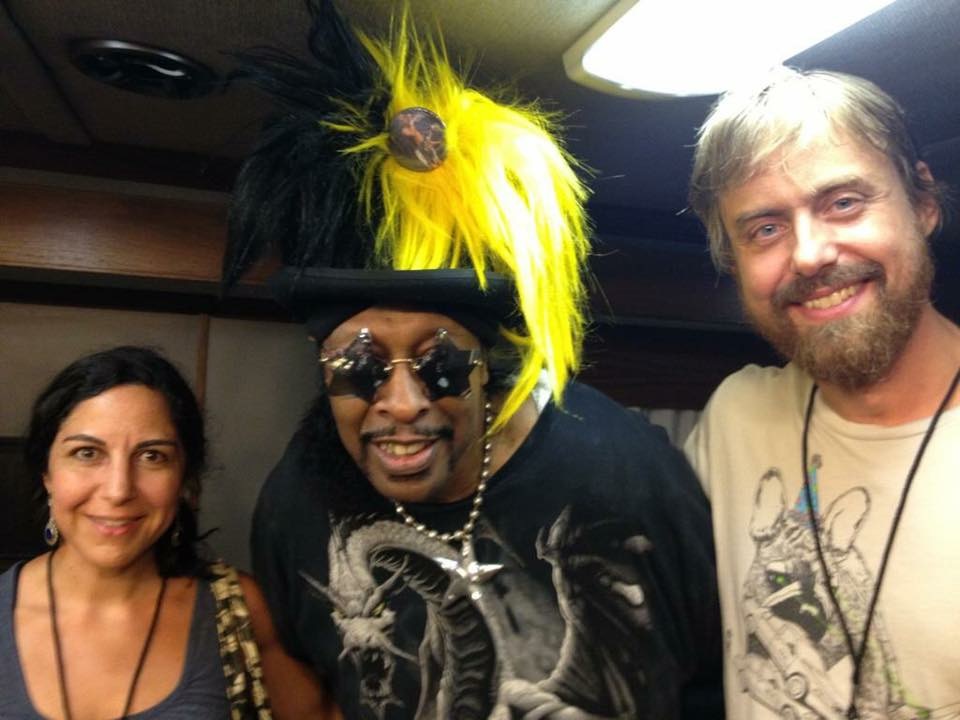
Who were your influences?
My early influences were John Entwistle, Chris Squire, Paul McCartney, and John Paul Jones. Early on I got into Motown and also James Brown. Obviously, James Jamerson is incredible, but James Brown’s bassists were big for me, and not just Bootsy Collins. I also liked the early stuff with Bernard Odum and the later stuff with Fred Thomas. A few years ago my friend Robby Todd was managing Bootsy and my wife and I were invited into his trailer to meet him after a concert here in Brooklyn. For me, it was the equivalent of meeting the pope. He was so gracious and cool, and he remembered details about a show of his I had seen 20 years earlier.
For upright, I got more into records and bands than just bass players. As a result of that, I started to get way more into people like Jimmy Garrison. He became one of my favorite bass players because I loved Coltrane and Elvin Jones so much. Another guy I got into, who is like my “desert island bass player,” is Wilbur Ware. He’s a little more obscure than other players. He has a very quirky rhythmic sense, but he’s super-swinging and super melodic. I’ve never heard him be anything other than genius level. I also got into Henry Grimes and Charlie Haden quite a bit.
When I got back into electric bass, I discovered a lot of those session players. The guy for me that stands out the most is Tommy Cogbill. I’m kind of obsessed with him. I started buying Aretha Franklin records mostly to check out Jerry Jemmott, who is another big favorite of mine. I got Aretha Now, which Jerry played on mostly, but Tommy was on it, too. Then I found out he’s the guy that played on “Respect” and “Chain of Fools”. Tommy Cogbill with Roger Hawkins on drums is one of the greatest R&B rhythm sections. After that, I started checking out Joe Osborn and Carol Kaye. I’ve been working on teaching myself how to play with a pick.
How did you get into music?
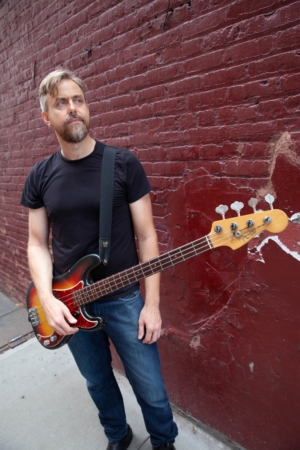 I started playing violin at 9 and played a little piano before that. When I was 14 I just wanted to be in a rock band, because I was listening to the bands I mentioned plus The Rolling Stones, Jimi Hendrix, and all those classic bands. I decided I could play drums, but they were too expensive. I could play guitar, but everyone played guitar. All my friends that played said they would be in a band with me, especially if I played bass. Since I was a fan of The Who, it was fine because I thought every bass player got to play like John Entwistle.
I started playing violin at 9 and played a little piano before that. When I was 14 I just wanted to be in a rock band, because I was listening to the bands I mentioned plus The Rolling Stones, Jimi Hendrix, and all those classic bands. I decided I could play drums, but they were too expensive. I could play guitar, but everyone played guitar. All my friends that played said they would be in a band with me, especially if I played bass. Since I was a fan of The Who, it was fine because I thought every bass player got to play like John Entwistle.
My cousin Steven played bass, and he let me borrow his Precision for a while. The first song I learned to play was “Cocaine” by Eric Clapton. It took me a year before I realized I was just playing the guitar riff and not the actual bass part. As terrible as my band sounded, we found our thing. We got together every weekend to jam. It opened up a whole world to me.
It was about a year later that I called my cousin to ask if he would sell me that bass. He said he was sentimentally attached to it, so I started mowing lawns to save money to buy a 1983 Fender Precision. I started off on a precision and that’s always been my go to. I started playing upright when I was 17 and that ended up being my main focus, but I was playing all through college in party cover bands. I pretty much stuck with P Basses, but in the early 2000’s I did get heavy into the short-scale hollow-body thing. I was totally obsessed with that.
Are you a gear nerd? What basses did you use on the album?
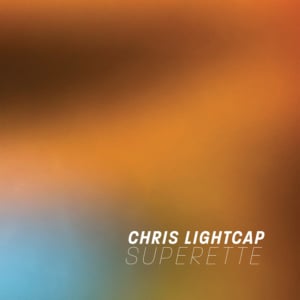 Yeah, I suffer from that affliction. I drool over vintage instruments online a lot. When I first got back into the electric, I started checking out a lot of old, junky short-scales and stuff. But the whole time I was on the lookout for a good Precision. I had played a couple that I couldn’t afford and was always looking for the right deal. In 2013, I found a ’64 Precision that was just right. I managed to trade three instruments for it. [laughs] That’s my main go-to electric bass, and it’s on about 80% of the record. Another bass I found was this Kay hollow-body from the early ’50s. I think the model is a K-162. It’s a really interesting instrument because it’s got a flat top and an arched back. The sound is not as tubby as most hollow-bodies. I used it on “While You Were Out”. On “Djyali”, I used another vintage Precision from ’66, which I have strung with roundwounds.
Yeah, I suffer from that affliction. I drool over vintage instruments online a lot. When I first got back into the electric, I started checking out a lot of old, junky short-scales and stuff. But the whole time I was on the lookout for a good Precision. I had played a couple that I couldn’t afford and was always looking for the right deal. In 2013, I found a ’64 Precision that was just right. I managed to trade three instruments for it. [laughs] That’s my main go-to electric bass, and it’s on about 80% of the record. Another bass I found was this Kay hollow-body from the early ’50s. I think the model is a K-162. It’s a really interesting instrument because it’s got a flat top and an arched back. The sound is not as tubby as most hollow-bodies. I used it on “While You Were Out”. On “Djyali”, I used another vintage Precision from ’66, which I have strung with roundwounds.
I didn’t use it on this record, but my upright is an old German bass that is about 100 years old. I got it when I was 18 from an old bass player from the Pittsburgh Symphony.
It’s been five or six years since Superette was formed, right?
Yes and I talked to Curtis about it five years before that. I had an idea of the stuff I wanted to write, but I wanted to hear the sound first. I did something similar to what I did when I started my two tenor sax band, Bigmouth, by bringing in some covers for us to jam on. I brought in the Skip Spence song “All Come To Meet Her” plus the Link Wray song “Ace of Spades”. Once I heard that, I had a sense of what I wanted to write for the band. I wrote four or five originals and then kept writing for the next couple of years while continuing to bring music in. It was great because even though it’s New York City and everyone is running around, everyone made time just to get together and play. Dan, who is just as busy as anyone else in the group, loves to rehearse and get music together. By the time we recorded, we had gigged but more importantly we had jammed a lot together. It gave us a lot of material to record. We laid down seventeen songs.
How did you hook up with Nels Cline and John Medeski?
John Medeski and I met in 2013 recording Matt Wilson’s album Gathering Call. I had known about his playing for many years and first saw him in the mid-90s. He is amazing musically and personally, so I always thought it would be great to do more playing with him. It’s a similar situation with Nels as I knew him from the Knitting Factory scene. He’d be on a lot of the same bills as Joe Morris, who is another great guitar player that I’ve worked with a lot. I’d always loved Nels’ playing. About three years ago I got called to do a benefit gig with him and we hit it off. He asked me to play a couple of nights at The Stone, which I did. Soon after that I thought, “Why don’t I have him on the album?” I could hear both of them [in the music] and knew they’d add something so great to it. I rearranged a lot of the songs and wrote some new music to feature them, as well. I couldn’t be more fortunate to know them.
One of the covers I really loved was Neil Young’s “Birds” because I love that song and you got out there with your bass playing. How did you decide to choose that one?
I’m a huge Neil Young fan and have about 20 of his albums. He was one of the guys that I got into when I started to listening to rock and roll again that I hadn’t gotten as deep into in my earlier years. I saw a video of him playing “Cinnamon Girl” on TV and suddenly realized, “This is an unbelievably great song!” It’s so perfectly put together. It sounds so simple, but the way everything comes together is so good. One day I was listening to the way his voice sounds on “Birds”. Everyone thinks that he has a high voice, but it’s more like a baritone range, similar to the top of a bass. I heard it as having a wide vibrato so I thought, “What if I played the melody of that song with tremolo?” It was cool because I could harmonize it with the guitars like he does with his voice on the record. After working that out, I picked a phrase that I thought would be good to jam over. Curtis takes that great, kind of plaintive solo over it. I don’t know where I got the idea to repeat that phrase at the end, but it gets big and then small again. Any chance I get to use fuzz with a tremolo, I figure I have to at least do once for the record. There aren’t a lot of bass features on the album, so that’s one of the more bass-centric ones.
I noticed that. Was that a conscious effort on your part?
No, it just works out that way. It’s not that I’m setting out to not feature myself, but I’m not making a plan to feature myself either. I want to feature the band. I think it’s part of my personality that I really enjoy playing the bass role. I love playing grooves and hooking up with a great drummer to make it happen. I also love interacting with the other band members. I enjoy soloing, too, but I probably solo more on other people’s records than my own. I sometimes will carve out space for a bass solo on all my records, especially on upright, just so I know I have the sense of variety. I don’t want it to always be the same solos every time. There are some records where bass players play the melody on every song, especially in jazz, and that’s just not my thing.
The day after I got my own upright bass, I went to two jazz concerts. The first was the Ray Brown trio with Gene Harris and Jeff Hamilton. The next night we went to see Ron Carter with Jim Hall. They were both featured because they’re great players, and of course they each took solos. But what came across was what amazing sounds and grooves they had. That had a really big impact on me. The first Charles Mingus album I got was Mingus Ah Um, and there are hardly any bass solos on that. I thought maybe he was more of a composer than a bass player, but as I eventually learned, he’s a [expletive] of a bass player! He’s the heaviest bass player ever – he was so far ahead of his time. Just because he didn’t feature his virtuosity in such an obvious way doesn’t detract from the record. In fact, maybe it makes it better.
Since the bass is not featured a lot, does that mean you did a lot of the writing on guitar?
Yeah, I do a lot of writing on guitar. I do a lot of writing on guitar for Bigmouth, too, and other works I’ve done. It’s cool because on one hand it feels familiar since it’s a stringed instrument and it’s tuned mostly in fourths, but there’s a lack of familiarity as well so I can discover new things. I don’t predict what it’s going to sound like. If I’m writing on upright bass, most of the time I can hear what I’m playing all the time. I can’t hear anything that I can’t predict. Piano is like guitar for me, too, because there are a lot of unfamiliar shapes. Guitar is a little more familiar so I can get into a better flow. I can come up with some chords and stop then really work on a melody. Sometimes I write on bass, sometimes on guitar, and sometimes I’ll write directly into a computer in Logic. I use a lot of different approaches. Whatever works.
Another song I wanted to touch on was “Djali”. Where did you get your love of West African music?
It’s something I’ve always been aware of and listened to, but haven’t researched that exhaustively. The first music I heard like that was when I heard Youssou N’Dour on the show Night Music that used to be on NBC. When I went to Williams College, there was a West African music ensemble that I participated in. Then I went to Wesleyan University for a semester where they have this really amazing West African music program with master musicians that are in residence there. I also got to study with the great jazz drummer Ed Blackwell, who researched a lot of that music and had it in his playing as well.
I was just lucky enough to be around all these sources. I started buying records by Fela Kuti and Thomas Mapfumo, who I got to see live. That’s always seeped into my writing. I also started checking out North African music from Morocco called Gnawa music, which a lot of bass players get into because the gimbri instrument is like a bass guitar.
In 2008, Regina Carter put this new project together asked me to be in it along with a master kora player from Mali called Yacouba Sissoko. I learned so much from playing with him. He brought a lot of music from his country to the band. He came from a very long line of kora players and anytime you mentioned another kora player like Toumani Diabate, he’d say, “Oh yeah, that’s my cousin.” Djali is a word that he had written on his kora. From what I read, it’s the Manding word for blood, and it’s another word for griot, which is a West African storyteller/musician. I don’t know how Malian that music sounds, but it just reminded me of things that I heard him play. Then I mixed it with those surf chords. So I wanted it to be his namesake.

